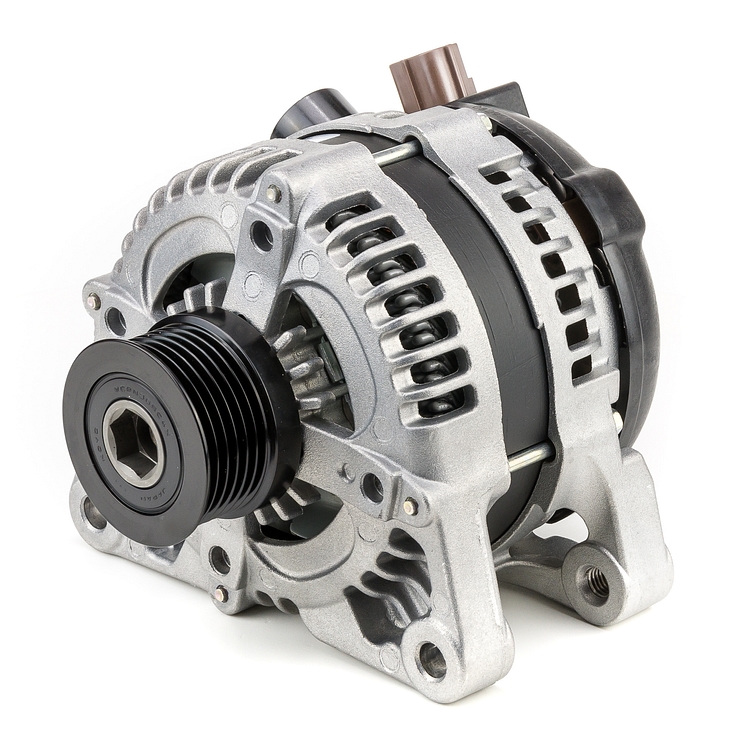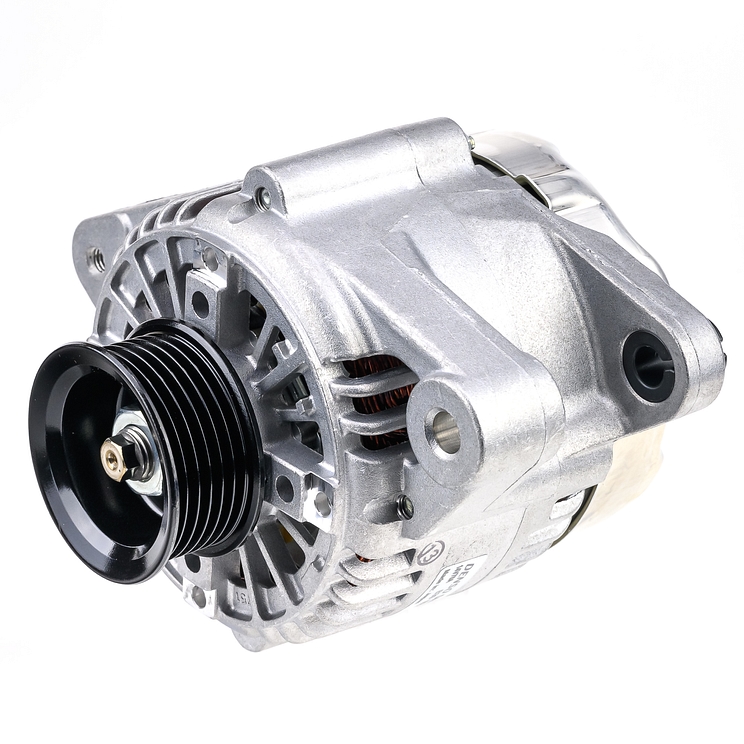Driven by the engine, the alternator (along with the belt and the regulator) converts mechanical power into electrical energy that supplies various loads in the vehicle system. During normal driving conditions, this electrical energy will be used to recharge the car battery. When the required electrical load does not match the output being produced by the alternator, the battery supplies any extra power needed to electrical equipment.
As the engine speed changes according to driving conditions, so does the alternator speed and generated voltage. The regulator controls this generated voltage and ensures that the various electrical loads are supplied with the appropriate voltage, including the car battery.





